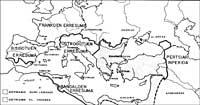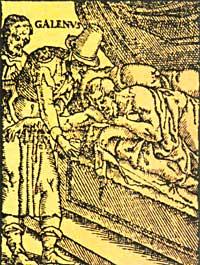Science in Bizani. Medicine
1987/12/01 Bandres Unanue, Luis Iturria: Elhuyar aldizkaria
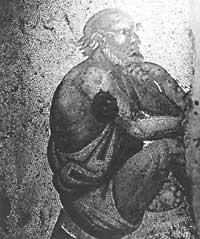
Despite being the first burning of its Library in 390, its influence continued and in it the total union of sciences and philosophy (contrary to Greek behavior) gave rise to a very conducive environment for the development of medicine.
In this environment, eclectic empiricism was respected, and the contributions of Syrians, Egyptians, Jews and Christians were adapted. However, with the passage of time and due to political conditions, day by day the new capital, Constantinopolis, became more important and the most prestigious men and cultural doctors came to live and work there.
While the army of the caliph Umar I entered Alexandria in 641, the atmosphere of Constantinopolis was very different: the Muslims are far away, they represent no danger and can lead a quiet life. Therefore, while Alexandria goes out, the achievement of Constantinopolis can be easily understood. On the other hand, Christianity, after oppressing heterodox movements, was at its most prosperous time.
The iconoclastic struggle announced by Ciisma had not yet begun. Christianity, conscious of its power and in a period of expansion, adopts a positive attitude towards certain material realities. And in this rich environment (pagan and spiritual at the same time, narrow and quiet) and under the authority of a secure power son of his time, medicine occupied a special place in the life of Byzantium, thus achieving development.
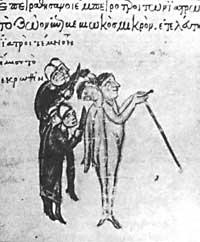
In this way, semiology, therapeutics, etc. will overcome the few anatomical and physiological tests carried out in the time of Galen as last representative. Therefore, it is not entirely true that the coroner declares himself a collector.
In this field, unlike on other occasions, besides making collections of ancient works, they obtained important contributions.
IV. The twentieth century was the fit of the best doctors, but in the next two centuries Alexandria took that honor and granted the world Galen. This time is called Alexandrian and VII. It lasted until the middle of the century. Meanwhile, many good bizarre doctors appeared.
The situation of this era is difficult to understand without taking into account the Medical Collection of Oribasios of Pergamo and the works called Synopsis. The collection, composed of almost half a thousand copies, has only reached a third today. In it, Oribasios, together with the synthesis of previous knowledge, tells us his valuable notes. This prudent therapist wrote an informative work on this subject, the Euporist. This book has been used for years and XVIII. In the 19th century it was used as a textbook at the University of Paris.
Another name to mention is the Aecio of Amida, who lived in the sixth century. He was born in the village of Amida, in Upper Mesopotamia. Studied in Alexandria, she worked as a doctor in Constantinopolis: we can conceive of the relationship between different places of the time. In Constantinopolis he became a doctor of Justinian. His work Tetrabiblion consists of four books and sixteen lectures. It is a collection of practical medicine, with very few new things. It contains some results from Galeno, Oribasios, Arkigenes and Sorano.
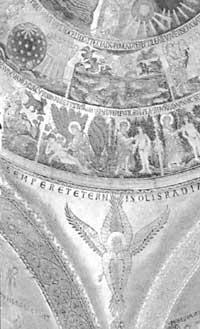
The other name we should mention is Paul of Egina. This wrote a work called medicine. Unfortunately today only seven books are preserved. Although it was based on ancient works, Paul was not one of those simple and blind. However, with a critical judgment he made a concrete selection and had no disagreement, according to that judgment, to rule out things that were not correct, even if they were from Hippocrates. He completed and rounded up the work with his results and personal observations. The most important of the seven books is the sixth. This refers to surgery and in this field of medicine we can see the ability of surgeons to overcome the obstacle that implied ignorance of the anatomy and progress after Celso.
Alejandro was born in 525 in the city of Tralles de Lidia in Asia Minor. Estefano was his medical father. Thanks to the economic level of his family he was able to travel Italy, Gaul, Hispania and North Africa. Thanks to this and the atmosphere of his house he got a high level of knowledge in medicine. Founded in Rome, he wrote twelve books. It shows us the pathology and internal diseases that we would say today.
Of course, he used the bibliography of his predecessors, but like Aezio, very critically and with a thousand observations. We wrote the list of Alexander's books to refer to the topics that medicine then used: I. Mental and brain diseases, phenitis, epilepsy and melancholy; II. Ophthalmology; III. Otology; IV. Angina; V. Lung diseases; LV. Pleuritis; VII. Stomach diseases; VIII. Anger, belly; IX. Liver pain, dysentery; X. Hydropesis; XI. Kidney and urinary tract diseases; XII. Drop.
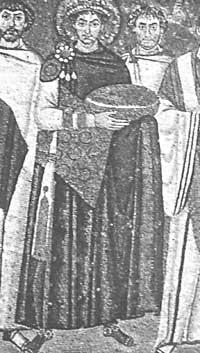
VII. Since the nineteenth century we have the call was constantinopolar. The Arabs will make the second siege to Constantinopolis and the VIII. At the beginning of the 20th century the empire will be only the coast of the Aegean. This accentuated the influence of Greece. However, the fact that was most important at the time in the field of science, even if it seems a lie, was the debate generated on images.
This debate, initially only theological, became a political and social problem, so it had its influence in the scientific field. At that time, the scandals produced in the library books of the monasteries of science caused the reaction of these centers to break their influence. On the other hand, all this caused the lack of freedom to cause a delay in the environment that needs the development of science.
After eliminating iconoclastic discussions, IX. In the 18th century Emperor Theophilus restored public education. This task, rethought in monasteries by the tranquility and growth of private teaching, led to the creation of the Byzantine Renaissance, IX. X and XI. It developed for centuries. Here IX. In the 18th century the Archbishop of Thessaloniki Lion wrote about astronomy, mathematics and medicine. At the same time, the patriarch of Fozio Constantinopolis made an extensive collection of acquaintances of his time, writing Myriobiblion. It consists of 279 books.
XI. Mikel VII. Mention the doctor Simeon Seth of the emperor Dukas. He was an encyclopedist. Its main importance is that of being the bridge between Arabic and Byzantine cultures and translated some Arabic books into Greek. In addition, he wrote a book on the properties of food called Syntagma, which helped medicine somehow recover the social prestige lost by the iconoclastic debate.
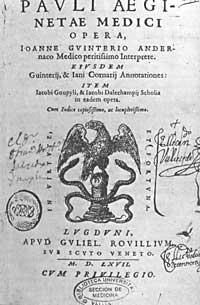
XII. In the eighteenth century the end of the Byzantine empire began; socio-political tours, lamentable economic situation, establishment of Eastern devotion and the Kietist movement (based on the enemy of science and antiintellectual), the Crusaders XIII. Due to the conquests of Constantinopolis and some coastal areas of the Aegean in the early 20th century, Byzanzio was limited only to the tiny empires of Nice and Trebisonda. In that environment and in that situation the science of Byzantium suffered a great decline.
However, in 1261 Mikel Palaeologus recovered Constantinopolis and in it we find Mirepsos of Alexandria. This wrote a book called Dinameron. The pharmacopoeia is enormous, methodical and complete, and in it we can find 2656 different formulas. This work reached the admiration of all doctors and the XVIII. Until the twentieth century it was used as a main medicine cabinet in the West. Without substantial changes in the Faculty of Medicine of Paris continued as a textbook until 1651.
From that moment on, the situation was not very suitable for the development of science, and although from time to time a name appeared that was not of great importance, the Byzantine era can be terminated.

Gai honi buruzko eduki gehiago
Elhuyarrek garatutako teknologia




